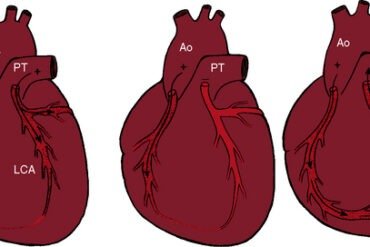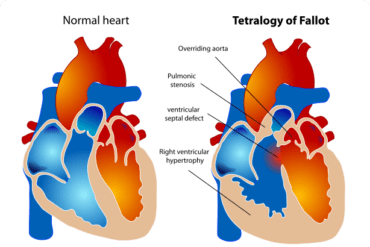Celiac Disease Symptoms and Diagnosis

Table of Contents
- Common Symptoms of Celiac Disease
- Diagnostic Tests for Celiac Disease
- Challenges in Diagnosing Celiac Disease
- Importance of Early Detection
- Advances in Celiac Disease Diagnosis
Common Symptoms of Celiac Disease
Celiac disease is an autoimmune disorder that affects the small intestine and can lead to severe discomfort and malabsorption of nutrients. It is important to recognize the common symptoms in order to receive an accurate and timely diagnosis. Here are some of the most frequently observed symptoms:
- Digestive Distress: People with celiac disease often experience gastrointestinal issues such as bloating, abdominal pain, diarrhea, and constipation. These symptoms can range in severity and may be chronic or intermittent.
- Unexplained Weight Loss: Due to decreased nutrient absorption, individuals with celiac disease may experience significant and unexplained weight loss.
- Malnutrition: Chronic nutrient deficiencies can result in malnutrition. This can lead to a variety of symptoms such as fatigue, weakness, anemia, and vitamin deficiencies.
- Skin Issues: Some individuals may develop dermatitis herpetiformis, a skin condition characterized by itchy blisters and a raised rash. These symptoms are often seen on the elbows, knees, and buttocks.
- Joint and Bone Pain: Celiac disease can lead to inflammation and damage to the joints and bones, causing pain and discomfort.
- Reproductive Problems: In women, celiac disease can cause menstrual irregularities, fertility issues, and complications during pregnancy.
- Neurological Symptoms: Some individuals may experience neurological symptoms such as headaches, migraines, depression, anxiety, and peripheral neuropathy.
If you suspect that you may have celiac disease, it is essential to consult with a healthcare professional for proper testing and diagnosis. Keep in mind that not all individuals with celiac disease display typical symptoms, and the severity of symptoms can vary widely.
Diagnostic Tests for Celiac Disease
Diagnosing celiac disease can be a complex process, as the symptoms can vary greatly among individuals. If you suspect that you or a loved one may have celiac disease, it is important to consult a healthcare professional for proper diagnosis. Several diagnostic tests are commonly used to confirm the presence of celiac disease. These include:
- Blood Tests: A blood test is often the first step in diagnosing celiac disease. The test measures the levels of certain antibodies in your blood, such as tissue transglutaminase antibodies (tTG-IgA) and endomysial antibodies (EMA-IgA). Elevated levels of these antibodies can indicate an immune reaction to gluten and suggest the presence of celiac disease.
- Intestinal Biopsy: If blood tests indicate a potential diagnosis of celiac disease, a healthcare provider may recommend an intestinal biopsy. During this procedure, a small piece of tissue is taken from the lining of the small intestine. The sample is then examined under a microscope to check for damage to the villi, small finger-like projections that help absorb nutrients. If the villi are flattened or damaged, it is a strong indication of celiac disease.
- Genetic Testing: Genetic testing can be helpful in determining the likelihood of developing celiac disease. It tests for the presence of specific genetic markers associated with the condition. However, it’s important to note that having these genetic markers does not guarantee the development of celiac disease. Thus, genetic testing is often used as a supplementary tool rather than a sole diagnostic method.
Before undergoing any diagnostic tests, it is crucial to continue consuming gluten in your diet. This is because eliminating gluten from your diet prior to testing may lead to a false negative result.
Remember, celiac disease can mimic other conditions, so it is essential to consult a healthcare professional for an accurate diagnosis. Once diagnosed, a strict gluten-free diet is the primary treatment for celiac disease. Proper diagnosis and management can help individuals with celiac disease lead a healthy and symptom-free life.
Challenges in Diagnosing Celiac Disease
Celiac disease is an autoimmune disorder triggered by the consumption of gluten, a protein found in wheat, barley, and rye. It affects approximately 1 in 100 people worldwide, but many cases go undiagnosed due to challenges in accurately identifying and diagnosing the condition. The following are some of the prominent hurdles faced in diagnosing celiac disease:
- Non-Specific Symptoms: The symptoms of celiac disease vary widely and can mimic those of other gastrointestinal disorders, making it difficult to differentiate. Common symptoms include chronic diarrhea, abdominal pain, bloating, weight loss, and fatigue. However, individuals may also experience joint pain, anemia, skin rashes, or neurological symptoms.
- Atypical Presentations: Some individuals with celiac disease may not display the typical gastrointestinal symptoms. Instead, they may exhibit other associated conditions such as osteoporosis, iron deficiency anemia, infertility, or recurrent miscarriages. These atypical presentations often delay the diagnosis, as healthcare providers may fail to recognize the underlying celiac disease.
- Inconsistent Antibody Tests: Blood tests measuring specific antibodies related to celiac disease, including anti-tissue transglutaminase (tTG) and anti-endomysial (EMA) antibodies, are commonly used screening tools. However, these tests may yield false-negative results, especially in individuals who have already started a gluten-free diet or have immunoglobulin A (IgA) deficiency. Additional tests and biopsies are required for confirmation.
- Limited Awareness: Lack of awareness among healthcare professionals, as well as the general population, contributes to underdiagnosis. Celiac disease can be mistakenly attributed to other conditions or dismissed as a dietary preference, leading to unnecessary suffering for individuals and delayed diagnosis.
- Reliance on Biopsy: Historically, a small intestinal biopsy has been considered the gold standard for diagnosing celiac disease. However, biopsies require invasive procedures and are dependent on skilled pathologists for accurate interpretation. This reliance on biopsies often leads to patients enduring prolonged symptoms before receiving a definitive diagnosis.
Efforts to improve celiac disease diagnosis include the development of more reliable antibody tests, increased awareness among healthcare professionals, and an exploration of non-invasive diagnostic techniques. Early and accurate diagnosis is crucial in managing celiac disease and preventing potential complications, such as malnutrition, osteoporosis, and an increased risk of certain cancers.
Importance of Early Detection
Recognizing the signs and symptoms of celiac disease and obtaining an accurate diagnosis as early as possible is crucial for several reasons:
- Prevention of long-term complications: Undiagnosed and untreated celiac disease can lead to serious long-term health problems. These may include malnutrition, anemia, osteoporosis, infertility, and an increased risk of developing certain types of cancer.
- Improved quality of life: Early detection of celiac disease allows individuals to adopt a gluten-free diet promptly. This dietary change can alleviate symptoms, improve overall health, promote normal growth and development, and enhance the overall quality of life.
- Avoidance of unnecessary medical interventions: Celiac disease symptoms can sometimes be misdiagnosed as other conditions. This may lead to unnecessary medical treatments or surgeries. Swift and accurate diagnosis helps avoid such interventions and the associated risks.
- Prevention of complications in relatives: Celiac disease tends to run in families. If one family member is diagnosed, it is essential to screen close relatives for the disease. Early detection in relatives can help prevent complications and ensure timely treatment.
- Identification of potential associated conditions: Celiac disease is associated with several other autoimmune disorders and health conditions. Early detection enables healthcare professionals to monitor for and manage these associated conditions more effectively.
Remember, celiac disease may present with a wide range of symptoms, varying from person to person. Early detection through proper evaluation, including blood tests and intestinal biopsies, is crucial to identify the disease and initiate the necessary dietary changes as early as possible. If you suspect you or a loved one may have celiac disease, it is important to consult a healthcare professional for proper evaluation and diagnosis.
Advances in Celiac Disease Diagnosis
Diagnosing celiac disease can be challenging due to its wide range of symptoms, which can often be similar to those of other gastrointestinal disorders. However, recent advances in diagnostic techniques have significantly improved the accuracy and efficiency of identifying this autoimmune condition. These advancements enable healthcare professionals to provide timely and targeted treatment, helping patients manage their symptoms effectively.
Here are some noteworthy advances in celiac disease diagnosis:
- Serological Testing: Blood tests that measure the presence of certain antibodies associated with celiac disease, such as anti-tissue transglutaminase (tTG) and anti-endomysial antibodies (EMA), have become more reliable and sensitive. These tests can now detect even lower levels of antibodies, increasing the accuracy of diagnosis.
- Genetic Testing: Genetic tests can identify specific human leukocyte antigen (HLA) genes that are commonly associated with celiac disease, such as HLA-DQ2 and HLA-DQ8. Although not definitive on its own, a positive genetic test result can assist in ruling out celiac disease if the tested individual does not carry the relevant genes.
- Improved Biopsy Techniques: Biopsy remains the gold standard for diagnosing celiac disease. However, advancements in endoscopic procedures and tissue analysis have refined the process. Multiple biopsies from different areas along the small intestine can now be taken more easily, increasing the chances of detecting characteristic signs of celiac disease, such as villous atrophy.
- Capsule Endoscopy: This noninvasive technique involves swallowing a small capsule containing a camera that captures images of the small intestine as it passes through the digestive system. Capsule endoscopy allows for a comprehensive evaluation of the small intestine, assisting in the diagnosis of celiac disease and other conditions that affect this area.
- Biomarker Research: Ongoing research aims to identify new biomarkers that may aid in the diagnosis of celiac disease. Promising biomarkers include detection of certain cytokines, antibodies, or genetic markers in blood or fecal samples. These advancements may provide simpler and more accurate diagnostic options in the future.
Early and accurate diagnosis of celiac disease is essential to prevent further complications and ensure proper management. If you experience symptoms such as persistent digestive issues, unexplained weight loss, or nutrient deficiencies, consult a healthcare professional who can consider these advances in diagnosis and guide you through the appropriate diagnostic process.


























